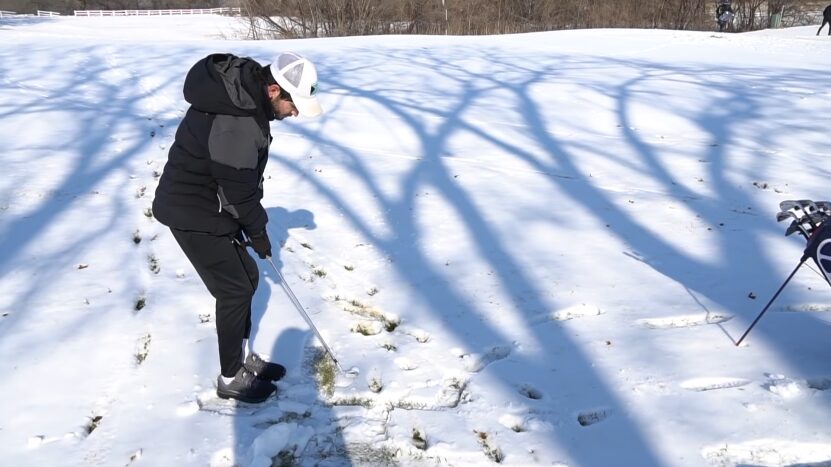The weather significantly impacts the outcome of golf, just like many other outdoor sports. From gusty winds and scorching sun heat to cold rain showers, a golfer must be flexible to these weather conditions.
For those new to these sports, playing with a range of uncomfortable elements may be challenging. But if you want to know how to handle these situations as you play, here are some tips and strategies straight from the pros.
1. Rainy Weather

Many players dread playing in wet conditions. Rainy weather greatly increases the chances of a ball slowing down, bouncing, and how far it’ll run out. Besides that, in professional tournaments, such weather conditions can also affect the game dynamics and betting outcomes on platforms like FanDuel, among many others.
However, a pro player can still perform well on wet turf because this condition allows easier putting as you can play for less break and hold the putts firmer. But before playing on rainy days, ensure you have the right gear.
This includes waterproof shoes, clothing, and gloves so you will be comfortable as you maintain your grip and footing. You may also consider a waterproof golf bag and rain cover to keep your clubs and grips dry.
Additionally, ensuring your clubs are fitted to the correct length for your height and swing mechanics can greatly enhance your performance, especially in challenging conditions like wet turf.
With wet turf, it’s also easy for the club to penetrate through the ground. So, minimize your ground contact by taking a steeper angle of attack, avoiding fat shots. You may also use a lower-lofted club during rainy games to compensate for the reduced ball flight caused by increased air resistance.
If you see lightning or hear thunderstorms, immediately seek shelter and wait for the weather to calm down before resuming the game.
2. Hot Weather
To maintain your performance during hot weather, professionals recommend tips like keeping yourself hydrated throughout the game. That means you should drink water before, during, and after playing. Consider drinking electrolyte-enhanced beverages to replenish the lost minerals as you sweat more.
For better airflow, you should also wear breathable and light-colored clothing. You may also bring sunglasses and a wide-brimmed hat during your game. Besides these, apply high-SPF sunscreen before playing and take shelter in shades whenever possible to avoid damaging your skin.
Such dry conditions can also result in firmer turf, so opt for a higher-lofted club so you can hit the ball cleanly and increase the roll on the greens and fairways With reduced air density, the ball can also travel further, so adjust your grip and swing accordingly.
3. Windy Conditions

Playing on a windy golf course can be really frustrating. It’s easy to determine the wind’s directions, but it’s difficult to gauge the outcome of the wind on your performance. However, you can try to follow the following steps to still play at your best, even when playing in the wind.
Of course, the first thing you should do is evaluate the wind’s direction and assess its strength. You could find hints by observing the movement of the trees or any flags present in the venue.
The club you use can also affect your performance. With a strong wind resistance, pick a club with more loft to counteract the wind. In contrast, choose a lower-loft club when playing downwind. This way, you can maximize distance as you play.
It’s also important to lower your center of gravity in windy conditions. You can do that by widening your stance so you can establish stability. You should also have a slightly firmer grip on the club for better control during your swing.
Also, practice controlled swing during windy conditions. This way, the ball won’t balloon upward as you reduce the spin. When playing golf downwind, try to hit the ball lower. Remember that the higher you hit the ball, the more significant the impact of the wind will be. Also, practice a more penetrating trajectory, as the wind can knock the ball down early when you hit it smoothly.
To protect yourself from this weather, bring a wind-resistant umbrella and wear a windbreaker to minimize the wind’s impact on your body during your rounds.
4. Snow Golfing

Many would think that golf is for the green field. But for the pros, waiting until summer is over is not an option. You can play golf even on the white field of ice. This would help you further enhance your golfing skills and keep your body warm during ice-cold seasons.
Many mountaineers and outdoor enthusiasts love to play this sport in the snow. For pro golfers, this isn’t a strange sight because this is actually a game invented in the 19th century by the poet Rudyard Kipling. He used to paint the ball red so it would still be identifiable on the white-covered golf course.
The rules of snow golf are the same as the original version of the sport, only that you won’t be able to wear those signature golf attires this season.
When playing in the snow, professionals would advise using wooden clubs or a 7-iron club since the conventional iron club would respond quickly to the falling temperature. You should also remember that the denser cold air due to the snow can create an additional pull to the golf balls.
Moreover, your body would become stiff and eventually affect the distance you can reach, so it’s important to keep yourself warm all throughout the rounds. Using some warmers to cover your ear lobes, your hands, and your head can keep you warm as you lose your body heat through these body parts.
Another tip is having an adjustable driver and adding loft to your wood to cover more distance. Pros would also advise doing warm-ups before going outside to play. If you’ve been away from the game for some time, practice up to 50 swings daily to keep yourself active before going outdoors.
Takeaway
A golfer must be adaptable and well-rounded. By training yourself to play in these varied weather conditions, you can be that resilient golfer. Now that you know how to adjust your swing, strategy, equipment, and your body through these elements, you can confidently enjoy this sport outdoors as much as you want.

